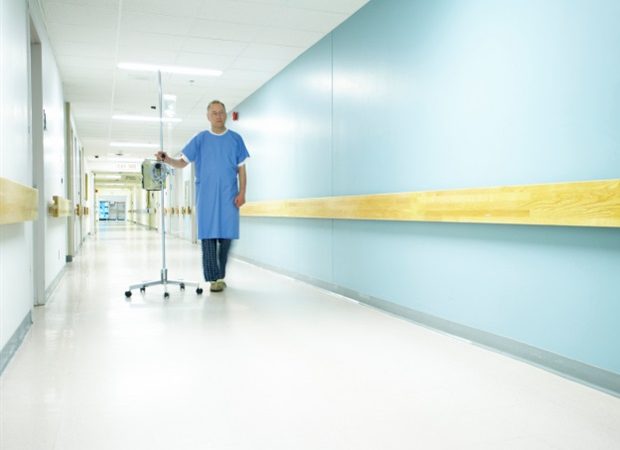An important component to a more successful treatment course for burns is correctly assessing them, and current methods are not accurate enough. A team of Stony Brook University researchers believe they created a new method to significantly improve burn assessment. They are employing a physics-based neural network model that uses terahertz time-domain spectroscopy (THz-TDS) data for non-invasive burn assessment. The team combines the approach with a handheld imaging device that they developed specifically for fast THz-TDS imaging of burn injuries. Details of their method are published in a paper in Biomedical Optics Express.
Studies have shown that the accuracy of burn diagnosis is only about 60 to 75 percent when trying to decide which one of the burns needs surgical intervention (skin grafting) or which burns can heal spontaneously. The Stony Brook team has found with their method using Terahertz Time-Domain Spectroscopy (THz-TDS) – broadly defined as detecting and measuring properties of matter with picosecond short pulses of electromagnetic fields – that THz spectroscopic imaging can increase the accuracy rate of burn diagnosis and classification to approximately 93 percent.
Led by M. Hassan Arbab, PhD, in the Department of Biomedical Engineering, the team took THz-TDS to probe a skin sample. Physical changes caused by a burn will produce alterations in the skin's terahertz reflectivity. Terahertz radiation, used in multiple industrial applications, is considered safe for use on the body.
In the paper, the researchers report that their artificial neural network classification algorithm can accurately predict the ultimate healing outcome of in vivo burns with 93 percent accuracy. They say that compared to previous machine learning approaches that the team previously used, the new method reduces the amount of training data necessary by at least two orders of magnitude. This could make it more practical to process big data sets obtained over larger clinical trials.
"In 2018, approximately 416,000 patients were treated for burn injuries in emergency departments in the U.S. alone," said Arbab. "Our research has the potential to significantly improve burn healing outcomes by guiding surgical treatment plans, which could have a major impact on reducing the length of hospital stays and number of surgical procedures for skin grafting while also improving rehabilitation after injury."
Arbab and his team are working with two leading physicians at Stony Brook Medicine to test the burn assessment method – Steven Sandoval, MD, Director of the Burn Center; and Adam Singer, MD, Interim Chair of the Department of Emergency Medicine.
One of the strengths of this project is the objectivity and reproducibility of the results. Data from the imaging device can be sent from a distant site, another hospital or even a war zone. This can direct via telepresence the care of a patient by a burn expert until the patient receive in-person care in a burn unit."
Steven Sandoval, MD, Director of the Burn Center
Drug Discovery eBook

"One of the most critical decisions when caring for a burn victim is determining how deep the burn is, thus the availability of a non-invasive, objective device to help non-burn specialists know how deep a burn is early after an injury is very valuable," says Dr. Singer. "This device can be used in many clinical settings, including in emergency rooms, where we would be able to quickly and clearly assess though using the device if patients need to be referred to a burn specialist or managed by non-burn specialists."
Various technologies have been developed to improve burn assessment, but they are not yet adopted in clinics due to reasons such as limited penetration depth and field of view, and cost. THz spectroscopy setups also tend to be bulky, expensive, and require cumbersome optical alignments making them impractical for real-world clinical settings.
"To address these challenges, we developed the portable handheld spectral reflection (PHASR) scanner, a user-friendly device for fast hyperspectral imaging of in vivo burn injuries using THz-TDS," explains Arbab. "The handheld device uses dual-fiber-femtosecond laser with a center wavelength of 1560 nm and teraherz photoconductive antennas in a telecentric imaging configuration for the rapid imaging of a 37 x 27 mm squared field of view in just a few seconds."
See how the handheld imaging device is used with the burn assessment technology and readout screen in this brief video.
The research team developed a neural network model using the five parameters obtained from fitting the broadband terahertz spectra of burn injuries obtained using this device to the dielectric permittivity described by the double-Debye model .
"This physics-based approach allows for the extraction of biomedical diagnostic markers from broadband THz pulses, reducing the dimensionality of THz data for training the artificial intelligence models and improving the efficiency of learning algorithms."
They tested the method by using the PHASR scanner to obtain spectroscopic images of skin burns and measure the permittivity of the burns. They then used the data to create a neural network model based on labeled biopsies. The model estimated the severity of the burns with an average accuracy rate of 84.5 percent and predicted the outcome of the wound healing process at 93 percent accuracy rate.
Despite the promising findings, Arbab and colleagues say more testing of both the technique and the handheld imaging device are needed before the technique is integrated into the current workflow of clinical burn assessment.
Research reported in the study was supported in part by the National Institute of Health's National Institute of General Medical Sciences (NIGMS), grant # R01GM112693.
Stony Brook University
Khani, M.E., et al. (2023) Triage of in vivo burn injuries and prediction of wound healing outcome using neural networks and modeling of the terahertz permittivity based on the double Debye dielectric parameters. Biomedical Optics Express. doi.org/10.1364/BOE.479567.
Posted in: Device / Technology News | Medical Science News
Tags: Artificial Intelligence, Burn, Diagnostic, Electromagnetic, Emergency Medicine, Hospital, Imaging, in vivo, Machine Learning, Medicine, Research, Skin, Spectroscopy, Technology, Wavelength, Wound, Wound Healing
Source: Read Full Article
